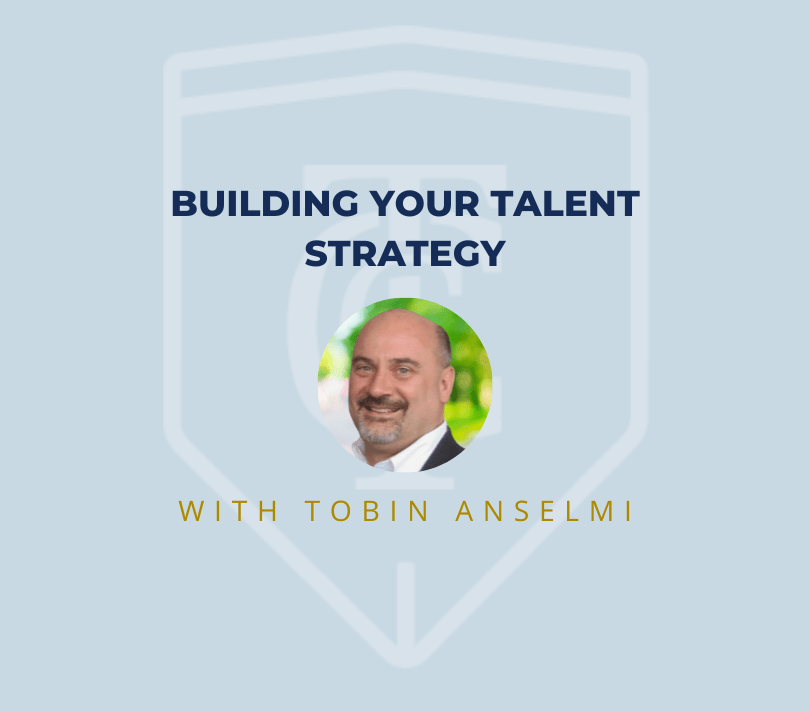
Building a talent strategy that aligns with the business strategy while enhancing the employee experience, building organizational capabilities, and fostering ongoing development is critical to achieving sustainable growth. This strategy goes beyond traditional HR practices to become a core driver of business performance and employee engagement/experience. Mark Effron, founder of the Talent Strategy Group and author of One Page Talent Management, advocates for simplicity, focus, and data-driven approaches in talent management, which can be essential principles in building a robust and effective talent strategy.
- Aligning Talent Strategy with Business Goals
The foundation of an effective talent strategy lies in aligning it with the organization’s business objectives. Further, your talent strategy should not only support, but actively drive the organization’s strategic goals, ensuring that talent initiatives have a direct impact on business performance. This alignment starts with understanding the business’s vision/purpose, mission, and key priorities.
For instance, if an organization is focused on growth through innovation, its talent strategy should prioritize hiring individuals with creative skills, providing a culture that encourages innovation, and offering resources that allow employees to experiment and bring new ideas forward. Alternatively, if the business is striving for operational efficiency, the talent strategy should focus on sourcing, developing, and retaining talent skilled in process optimization, lean management, and operational excellence.
As suggested by Effron, your talent strategy should be designed with simplicity and clarity, so it’s easily understood and executed by managers and aligns with key business metrics. A simplified talent strategy enables leaders to focus on high-impact initiatives and minimizes the complexity that often accompanies talent management programs.
- Enhancing the Employee Experience
A talent strategy that aligns with business goals must also create an environment where employees are engaged, motivated, and committed to the organization. Employee experience—encompassing everything from company culture to career development opportunities—is increasingly recognized as a competitive differentiator. Your talent approach should focus on “the employee lifecycle” to design experiences that are fulfilling at each stage of an employee’s journey within the organization.
A comprehensive employee experience strategy includes several key components:
- Onboarding: A structured onboarding process helps new hires acclimate to the organizational culture, understand their roles, and build connections that enhance retention.
- Meaningful Work: Employees benefit from seeing how their roles contribute to the organization’s larger goals, which enhances job satisfaction. This might involve creating cross-functional teams, providing feedback that reinforces their contributions, or offering opportunities to engage in projects beyond their standard roles.
- Employee Feedback and Engagement: Mechanisms like pulse surveys and regular check-ins can reveal insights into employee sentiment and help the organization improve its culture and practices.
The importance of leveraging employee data in enhancing employee experience cannot be overstated. By using analytics to track engagement levels, turnover, and employee feedback, organizations can gain insights into areas of improvement and take action before issues affect broader employee satisfaction or performance.
- Building Organizational Capabilities
Organizational capability—having the right people with the right skills in the right roles—is fundamental to executing a business strategy. It is vital to your talent strategy to make building the necessary capabilities a priority. This can involve developing both technical skills specific to a field and soft skills that drive effective communication, leadership, and collaboration.
To effectively build organizational capabilities, talent leaders can focus on several key areas:
- Workforce Planning: Regular assessment of future needs helps identify gaps in the current workforce, ensuring alignment with strategic goals. This includes understanding emerging skills needed to address industry changes or technological advances.
- Strategic Hiring: Hiring should focus on both technical expertise and cultural fit, as both are essential for employee success.
- Competency Models: Clear competency models define the skills and behaviors required for each role, aligning employees with organizational goals.
By building a workforce with the specific capabilities that align with strategic priorities, organizations can create a talent foundation that is flexible and resilient in the face of change.
- Fostering Continuous Employee Development
Employee development at all levels should be ongoing and woven into the fabric of daily work. In his book One Page Talent Management, Effron argues that development efforts should be simple, practical, and immediately applicable, focusing on high-impact practices rather than complex programs. This aligns with the concept that learning should be a continuous journey that enables employees to adapt, grow, and bring fresh value to the organization.
To foster a culture of continuous development, organizations can take several strategic actions:
- Individual Development Plans (IDPs): Realistic and achievable IDPs, crafted collaboratively, are aligned with both employee aspirations and organizational needs. IDPs are most effective when managers actively support and regularly review them with employees.
- Learning and Development Programs: Practical, role-relevant training modules cater to various needs, from foundational skills to leadership development. With Effron’s emphasis on simplicity, organizations might prioritize practical, role-relevant training modules over elaborate, generalized programs that may have limited applicability.
- Career Pathing: Clear career paths empower employees to visualize their future in the organization, balancing employee aspirations with business needs. To be effective, career development needs to balance the employee’s aspirations with business needs, making career growth a shared responsibility.
- Leadership Development: Leadership development efforts should emphasize practical skills and straightforward tools, enabling leaders to provide effective guidance and build a high-performance culture.
- Using Data and Analytics to Drive Decisions
Data-driven talent management will help ensure your talent decisions are be grounded in robust analytics. Effective talent strategies use data to understand trends, predict future workforce needs, and evaluate the success of talent initiatives. Analytics can reveal correlations, such as between employee engagement and turnover, guiding adjustments in the talent strategy.
By leveraging data, organizations ensure that their talent strategy remains agile, evidence-based, and able to address emerging challenges.
Conclusion
A talent strategy that supports business objectives, enriches the employee experience, builds organizational capabilities, and fosters ongoing development is essential for a company’s long-term success. The talent principles advocated here, and by Effron, provide a clear, actionable framework to achieve these goals: keep it simple, align with the business, use data to drive decisions, and focus on practices that have the highest impact. By focusing on these areas, organizations can build a workforce that is capable, engaged, and aligned with the strategic direction, creating a foundation for sustainable success.
About Tobin Anselmi
 Tobin Anselmi joined The Christopher Group Consulting Services Division in 2020 as a Managing Partner & Talent Management Practice Leader. Tobin holds a Ph.D. in I/O Psychology. Over the last 30+ years, Tobin has served as a consultant to organizational leadership on human capital management issues such as talent management (selection, performance management, development, and movement), organizational effectiveness, change management, and leadership development. He is direct, engaging, and result-oriented. His practical recommendations to organizational issues are grounded in years of experience developing and implementing solutions around the globe. To learn more about Tobin visit his bio page.
Tobin Anselmi joined The Christopher Group Consulting Services Division in 2020 as a Managing Partner & Talent Management Practice Leader. Tobin holds a Ph.D. in I/O Psychology. Over the last 30+ years, Tobin has served as a consultant to organizational leadership on human capital management issues such as talent management (selection, performance management, development, and movement), organizational effectiveness, change management, and leadership development. He is direct, engaging, and result-oriented. His practical recommendations to organizational issues are grounded in years of experience developing and implementing solutions around the globe. To learn more about Tobin visit his bio page.

